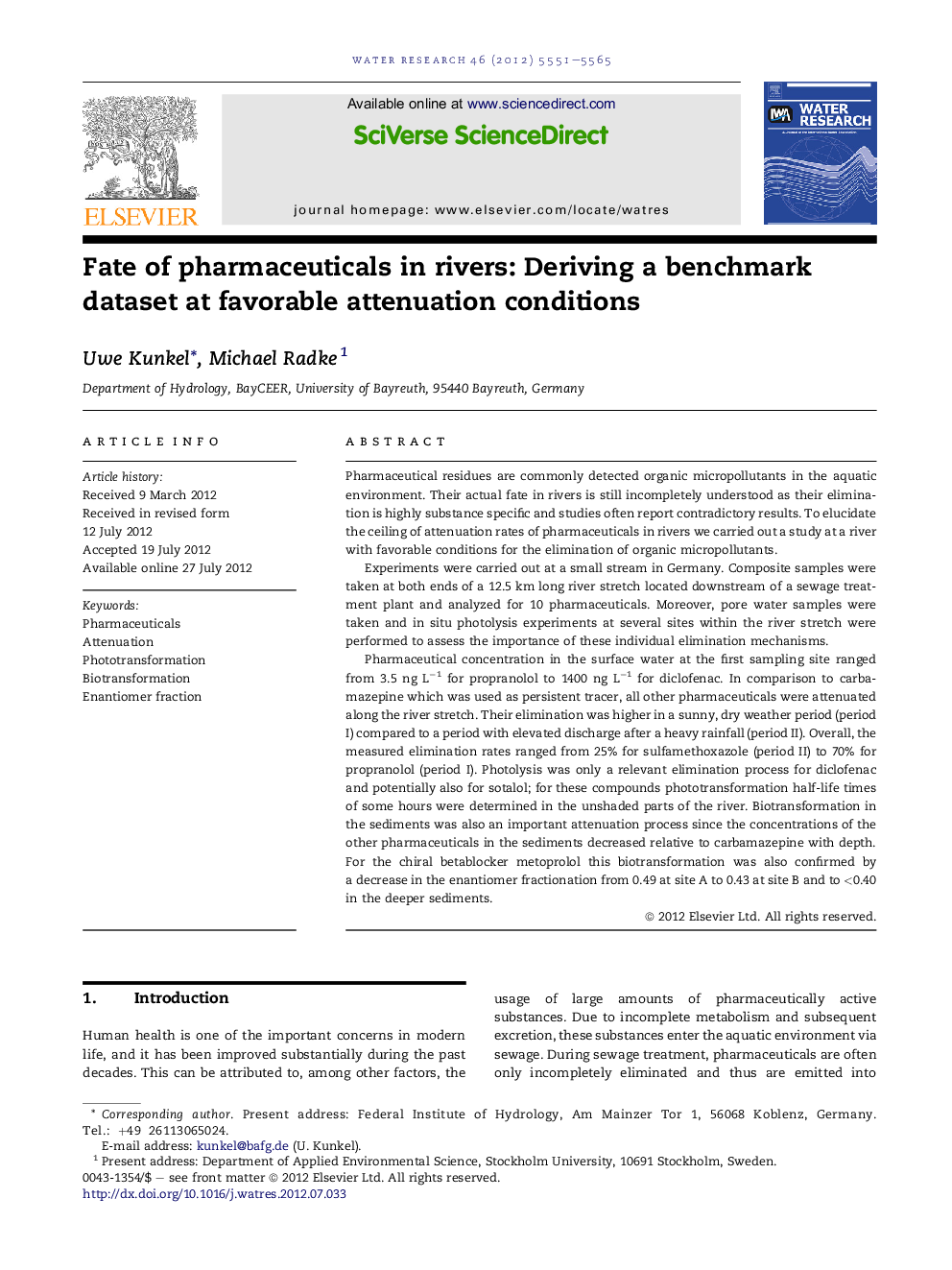| کد مقاله | کد نشریه | سال انتشار | مقاله انگلیسی | نسخه تمام متن |
|---|---|---|---|---|
| 4482593 | 1316864 | 2012 | 15 صفحه PDF | دانلود رایگان |

Pharmaceutical residues are commonly detected organic micropollutants in the aquatic environment. Their actual fate in rivers is still incompletely understood as their elimination is highly substance specific and studies often report contradictory results. To elucidate the ceiling of attenuation rates of pharmaceuticals in rivers we carried out a study at a river with favorable conditions for the elimination of organic micropollutants.Experiments were carried out at a small stream in Germany. Composite samples were taken at both ends of a 12.5 km long river stretch located downstream of a sewage treatment plant and analyzed for 10 pharmaceuticals. Moreover, pore water samples were taken and in situ photolysis experiments at several sites within the river stretch were performed to assess the importance of these individual elimination mechanisms.Pharmaceutical concentration in the surface water at the first sampling site ranged from 3.5 ng L−1 for propranolol to 1400 ng L−1 for diclofenac. In comparison to carbamazepine which was used as persistent tracer, all other pharmaceuticals were attenuated along the river stretch. Their elimination was higher in a sunny, dry weather period (period I) compared to a period with elevated discharge after a heavy rainfall (period II). Overall, the measured elimination rates ranged from 25% for sulfamethoxazole (period II) to 70% for propranolol (period I). Photolysis was only a relevant elimination process for diclofenac and potentially also for sotalol; for these compounds phototransformation half-life times of some hours were determined in the unshaded parts of the river. Biotransformation in the sediments was also an important attenuation process since the concentrations of the other pharmaceuticals in the sediments decreased relative to carbamazepine with depth. For the chiral betablocker metoprolol this biotransformation was also confirmed by a decrease in the enantiomer fractionation from 0.49 at site A to 0.43 at site B and to <0.40 in the deeper sediments.
Figure optionsDownload high-quality image (187 K)Download as PowerPoint slideHighlights
► The attenuation of pharmaceuticals in a river was studied under best-case conditions.
► Most investigated pharmaceuticals were efficiently attenuated along the river stretch.
► The biotransformation of metoprolol was confirmed using enantiomer-specific analyses.
Journal: Water Research - Volume 46, Issue 17, 1 November 2012, Pages 5551–5565